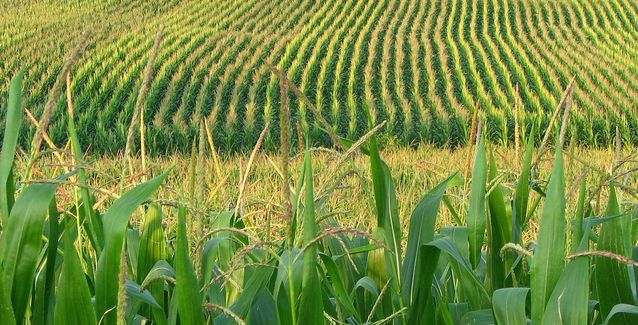Corn harvest could be protracted, sorghum fields nearly gone
by September 3, 2019 6:03 pm 1,087 views

Arkansas corn farmers planted the second largest acreage in the state’s history this year and the erratic weather patterns during the planting season could prolong the crop’s harvest. About 810,000 acres were dedicated to the crop in the Natural State, according to the United States Department of Agriculture.
“Think back to the planting season when corn was planted from March through June,” Jason Kelley, extension wheat and feed grains agronomist for the University of Arkansas System Division of Agriculture said. “In a normal year, we’re done planting by the end of April. So, this year’s planting window was twice as wide and unfortunately harvest will likely be much longer than normal.”
In mid-August, growers with grain dryers began harvesting even though moisture was slightly higher. Growers without grain dryers have had to wait for moisture to come down are just beginning harvest, he said.
“To help dry the crop down and facilitate harvest, we need 90 degree temperatures and dry weather for an extended time, but the forecast says temperatures will drop and we have good chances of rain, which will again delay harvest. Nothing has come easy this season,” he said.
With only about 5% to 10% of the crop harvested, yield reports have been variable.
“We have some fields that are reporting exceptional yields as high as 250 bushels per acre,” Kelley said. “Unfortunately, others are reporting much lower yields. Fields with poor stands and/or poor drainage will likely have disappointing yields. Our seven-year state average yield is near 180 bushels per acre. With all of our late-planted corn, reaching that average level may be a challenge this year.”
How is the dryland crop with all the rain through the growing season?
“With the rains, you’ll likely be happy with a dryland crop. In Arkansas, over the last decade, dryland acres usually comprise between five and 10% of the total crop. Obviously, in dry years, the dryland acres don’t make much of a crop. This year, with timely rains there is some dryland corn that will have surprisingly high yields,” he added.
At the same time, Kelley said, some of the better irrigated ground had delayed planting due to wet conditions and ultimately will lower yields compared to a normal year. Farmers who planted corn late will need a number of things to go their way to ensure a viable crop is harvested, he said.
“This year, we planted approximately a third of our crop after May 1. Foliar disease is also typically a bigger problem in late-planted corn – although southern rust has been lower than normal despite above average rainfall.”
Kelley noted this summer hasn’t been extremely hot and that may help with the late-planted crop as hot temperatures during June and July usually lower corn yields. Those who planted the crop in May and June might not be able to harvest it until October. One silver lining from the early, heavy rains is that irrigation costs have been minimized.
SORGHUM DISAPPEARING
Another crop, sorghum, has virtually disappeared. Sorghum is a cereal grain that grows tall like corn. It is used in sweeteners, livestock feed, and ethanol. It typically grows in drier territory versus wetter environments.
Sorghum was once a booming crop in Arkansas during the middle of the decade, but those acres are nearly non-existent now. The state’s sorghum crop has all but disappeared in the last four planting cycles. In 2015, Arkansas growers planted approximately 450,000 acres of the grain; in 2016, that number fell precipitously to just 47,000 acres, and again in 2017 to approximately 25,000 acres, USDA reported.
Market prices and insect pressure caused the decline. The few remaining acres are being harvested.
“We don’t have a lot of grain sorghum acres – maybe 5,000 acres in the state. That’s a precipitous drop, because three or four years ago, the state was close to 450,000 acres,” Kelley said. “The price for grain sorghum and fears of things like the sugarcane aphids are a big factor in that. A lot of the grain sorghum was planted dryland this year and where it’s been taken care of it looks very good with the ample summer rainfall.”
